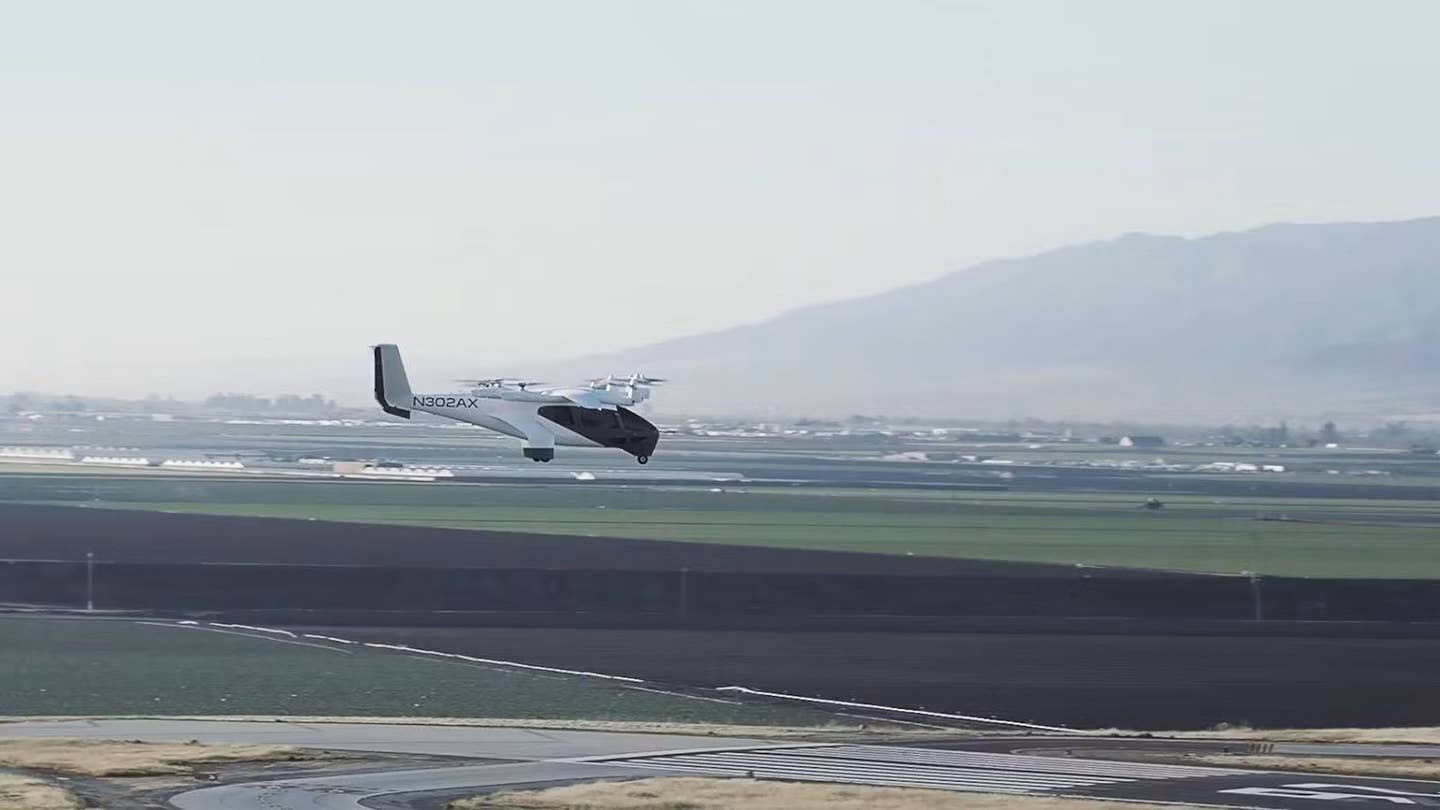FAA Issues Final Airworthiness Criteria for Archer Midnight Air Taxi
Electric vertical takeoff and landing (eVTOL) air taxi manufacturer Archer Aviation achieves a critical regulatory milestone, laying the foundation for type certification of its aircraft.

Archer’s Midnight eVTOL air taxi is just the second such aircraft, following Joby Aviation’s eVTOL air taxi, to receive final airworthiness criteria from the FAA. [Courtesy: Archer Aviation]
Electric vertical takeoff and landing (eVTOL) air taxi manufacturer Archer Aviation on Thursday achieved a critical milestone in the type certification process for its flagship Midnight aircraft.
The FAA on Thursday issued final airworthiness criteria for the company’s Midnight Model M001, making the aircraft only the second eVTOL air taxi to achieve that regulatory milestone in the U.S. The approval lays out the standards the regulator will use to gauge the aircraft’s ability to integrate into U.S. airspace. Archer aims to launch Midnight air taxi routes in New York and Chicago in partnership with United Airlines as soon as next year.
The manufacturer’s unique, zero-emission aircraft is designed for a pilot to fly as many as four passengers on back-to-back, 10-to-20-minute flights. The air taxi takes off vertically like a helicopter but cruises at up to 150 mph (130 knots) using a combination of fixed wings and forward propellers. Its optimal range is 10 to 50 sm (8.7 to 43 nm), but it can fly as far as 100 sm (87 nm) on a single charge.
Midnight has a total of 12 propellers, six of which are “tilt props” that can be positioned vertically or horizontally to aid in takeoff, landing, or forward flight. Propulsion is generated by six proprietary lithium-ion battery packs, each powering a pair of electric engines. The result, Archer claims on its webpage, is flights that are “up to 100 times quieter than a helicopter.”
The air taxi uses fly-by-wire flight controls and will be certified in the powered-lift category, a relatively new classification that still requires final FAA regulations on pilot certification. Archer claims it will ultimately be cost competitive with ground-based rideshare services, such as Uber and Lyft, on trips to and from urban centers and airports.
The FAA in December 2022 issued Archer’s proposed airworthiness criteria, allowing stakeholders and members of the public to comment on the prospective certification requirements. Competitor Joby Aviation received its own proposed requirements one month prior and is the only other eVTOL manufacturer to obtain final airworthiness criteria from the regulator, issued in March.
Archer’s finalized criteria are scheduled to be published in the Federal Register on Friday, where they will be visible to the public.
“Midnight is one giant step closer to taking passengers into the sky in the coming years in the U.S.,” said Billy Nolen, chief regulatory affairs officer at Archer and a former FAA administrator. “Thank you to the team at the FAA for their continued hard work in support of making the electrification of aviation a reality.”
The issuance of final airworthiness criteria allows Archer to proceed to for-credit flight testing with the regulator, a key step in the type certification process. For-credit testing will allow the FAA to gauge Midnight’s performance against the standards released Thursday, which could result in the aircraft being deemed safe to fly in U.S. skies.
Archer in February began building three type-conforming aircraft prototypes to be used in those evaluations. The manufacturer said Thursday that the first of those models will begin piloted flight testing later this year, followed by for-credit FAA testing.
“[Thursday’s] milestone adds significant momentum to Midnight’s certification program as we further ramp up our for-credit testing efforts with the FAA,” said Eric Wright, head of certification for Archer.
So far, only China’s EHang has managed to obtain type certification for an eVTOL air taxi from an aviation regulator, the country’s Civil Aviation Administration (CAAC). The manufacturer in December made the world’s first passenger-carrying eVTOL flight, completing a pair of commercial demonstrations in China.
German manufacturers Lilium and Volocopter also aim to launch commercial air taxi services in the next few years.
But Archer and Joby’s models are expected to be the first to take flight in the U.S., starting with major metro areas such as New York, Chicago, and Los Angeles. The companies have partnerships with major U.S. airlines, Archer with United and Joby with Delta Air Lines, though Joby intends to operate its own air taxi.
The manufacturers now have about a year and a half to meet their stated launch target of 2025. But the publication of final airworthiness criteria certainly gives them a lift.
Like this story? We think you'll also like the Future of FLYING newsletter sent every Thursday afternoon. Sign up now.

Subscribe to Our Newsletter
Get the latest FLYING stories delivered directly to your inbox






